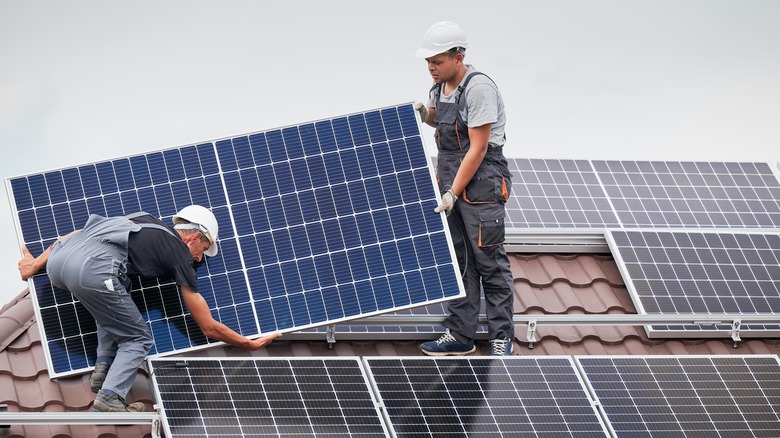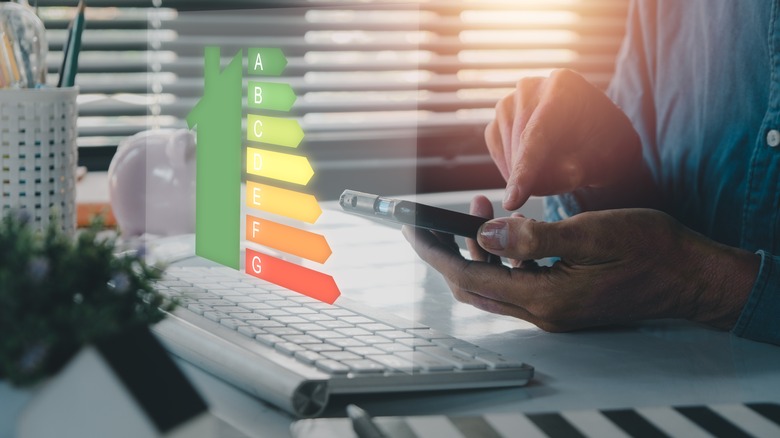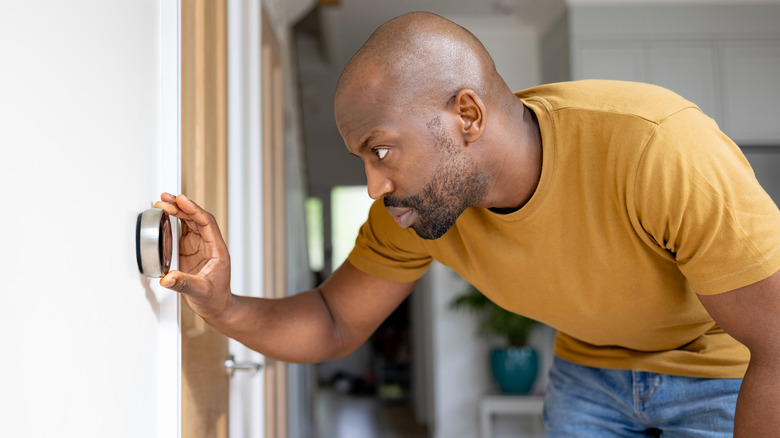Here's How An Energy Efficient Home Can Save You Money On Taxes
Our homes, so often fully kitted out in a range of high-tech gadgets, can use significant amounts of energy. A 2021 study from the EIA, EnergyBot reports, found that Louisiana households used, on average, the most in the country, at 14,302 kilowatt-hours every year (around 3,700 more than the national average). Whether being more eco-friendly or simply saving money on bills is your encouragement to be more energy efficient, there are important steps that can be taken. We're more conscious than ever of how much energy we're using.
From our friend groups to our families and, of course, our leaders, it seems we just can't get away from the push to go green, or at least, greener. Many despair about exactly what they, as individuals, can do to help the global battle against the climate crisis. For many, this question becomes more a matter of what they can realistically afford to do (particularly with EVs).
Though it can be very costly to replace certain devices and/or bring in new ones to help with energy efficiency, there are also some financial benefits to doing so. Here's how the Energy Efficient Home Improvement Credit scheme works, and how it could help you cut down on one of the greatest financial burdens of all: taxes.
What is the Energy Efficient Home Improvement Credit scheme?
From insulation and being vigilant with the thermostat to something like installing a heat pump, some steps we can take to make our homes more efficient are more dramatic than others. The more drastic ones, naturally, tend to be more effective but require a significantly higher outlay. This can put such measures out of reach, or discourage their installation.
A heat pump, for instance, works by transferring natural heat to a home, with no carbon emissions required. Though they can be efficient, having one installed can cost in excess of $30,000 for solar models. As the cost of energy-efficient devices ranges so much (both installing and running them), a wider range of methods would surely be adopted if they were more generally affordable. The Energy Efficient Home Improvement Credit scheme is one measure that can help with this.
As the IRS reports, the scheme is active as of January 1, 2023, and potential tax credits are available to claim on energy-efficient improvements made following that date. Using the example of the heat pump, up to $2,000 can be claimed on a qualifying installation, and the same applies to biomass boilers and stoves. Claims can be made for a wide variety of other improvements, too.
How much can be saved, and what are the restrictions?
On a wider basis, the IRS notes that "energy property costs and certain energy-efficient home improvements" can be claimed at up to $1,200, or a percentage of the cost spent on improvements that year. That's capped at 30%, and if this amounts to less than $1,200, this is the amount that will be able to be claimed instead.
All such improvements must be made to the main US residence of the person who commissioned the improvements. If you're considering making such energy efficiency tweaks to your home and taking advantage of the credits, it's crucial to consider the types of changes you have in mind and how they may be affected. Doors on the outside of the house, for instance, are eligible for overall claims up to $500 over the course of a year, while air conditioners and similar equipment credits max out at $600.
Crucially, these are only yearly limits, rather than the total that a person can claim for specific improvements through Energy Efficient Home Improvement Credit. It could make a very significant change to your tax outlay indeed, then. Some may not know where to begin when considering the matter, but help is available there: audits are eligible for credits too. Hopefully, going forward, governments will continue to do more to bring such measures into reach for more people.


